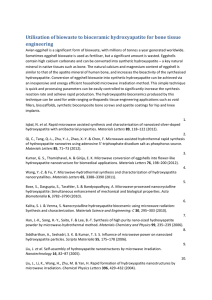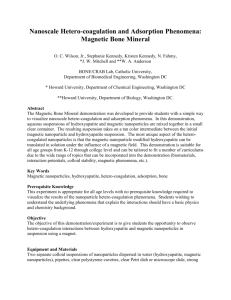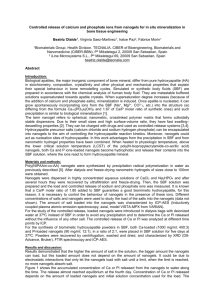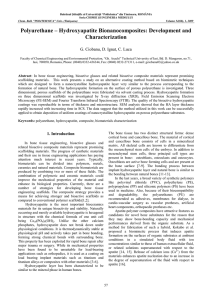*Multimodal spectroscopy to determine stem cell differentiation on
advertisement
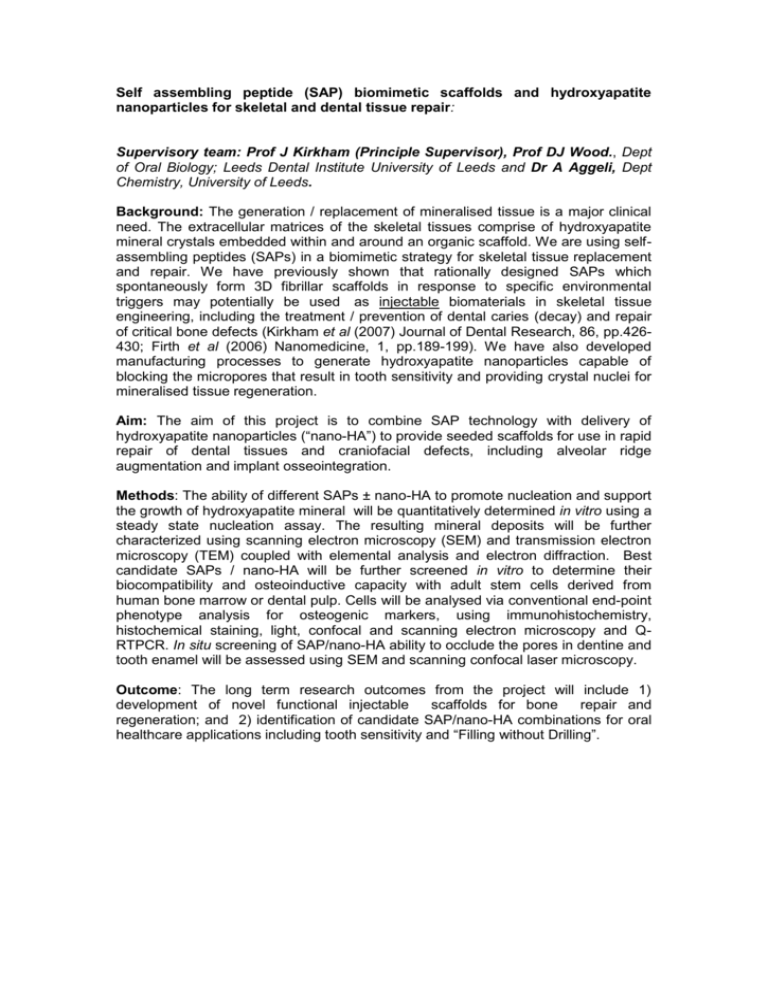
Self assembling peptide (SAP) biomimetic scaffolds and hydroxyapatite nanoparticles for skeletal and dental tissue repair: Supervisory team: Prof J Kirkham (Principle Supervisor), Prof DJ Wood., Dept of Oral Biology; Leeds Dental Institute University of Leeds and Dr A Aggeli, Dept Chemistry, University of Leeds. Background: The generation / replacement of mineralised tissue is a major clinical need. The extracellular matrices of the skeletal tissues comprise of hydroxyapatite mineral crystals embedded within and around an organic scaffold. We are using selfassembling peptides (SAPs) in a biomimetic strategy for skeletal tissue replacement and repair. We have previously shown that rationally designed SAPs which spontaneously form 3D fibrillar scaffolds in response to specific environmental triggers may potentially be used as injectable biomaterials in skeletal tissue engineering, including the treatment / prevention of dental caries (decay) and repair of critical bone defects (Kirkham et al (2007) Journal of Dental Research, 86, pp.426430; Firth et al (2006) Nanomedicine, 1, pp.189-199). We have also developed manufacturing processes to generate hydroxyapatite nanoparticles capable of blocking the micropores that result in tooth sensitivity and providing crystal nuclei for mineralised tissue regeneration. Aim: The aim of this project is to combine SAP technology with delivery of hydroxyapatite nanoparticles (“nano-HA”) to provide seeded scaffolds for use in rapid repair of dental tissues and craniofacial defects, including alveolar ridge augmentation and implant osseointegration. Methods: The ability of different SAPs ± nano-HA to promote nucleation and support the growth of hydroxyapatite mineral will be quantitatively determined in vitro using a steady state nucleation assay. The resulting mineral deposits will be further characterized using scanning electron microscopy (SEM) and transmission electron microscopy (TEM) coupled with elemental analysis and electron diffraction. Best candidate SAPs / nano-HA will be further screened in vitro to determine their biocompatibility and osteoinductive capacity with adult stem cells derived from human bone marrow or dental pulp. Cells will be analysed via conventional end-point phenotype analysis for osteogenic markers, using immunohistochemistry, histochemical staining, light, confocal and scanning electron microscopy and QRTPCR. In situ screening of SAP/nano-HA ability to occlude the pores in dentine and tooth enamel will be assessed using SEM and scanning confocal laser microscopy. Outcome: The long term research outcomes from the project will include 1) development of novel functional injectable scaffolds for bone repair and regeneration; and 2) identification of candidate SAP/nano-HA combinations for oral healthcare applications including tooth sensitivity and “Filling without Drilling”.








